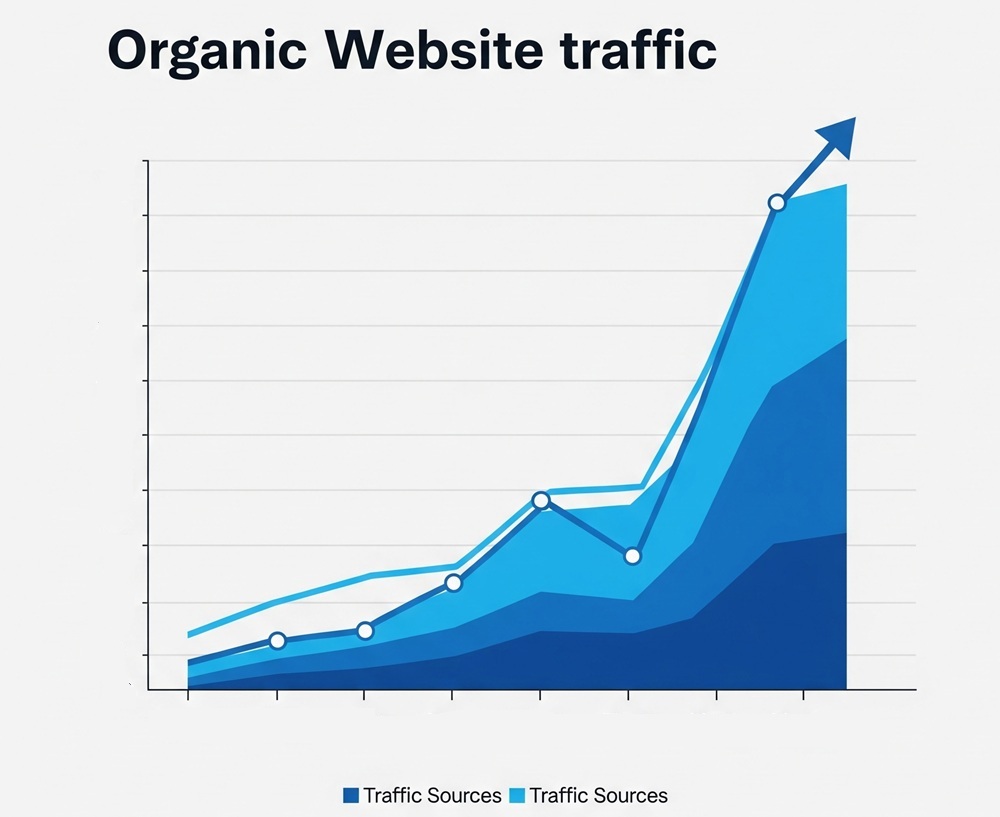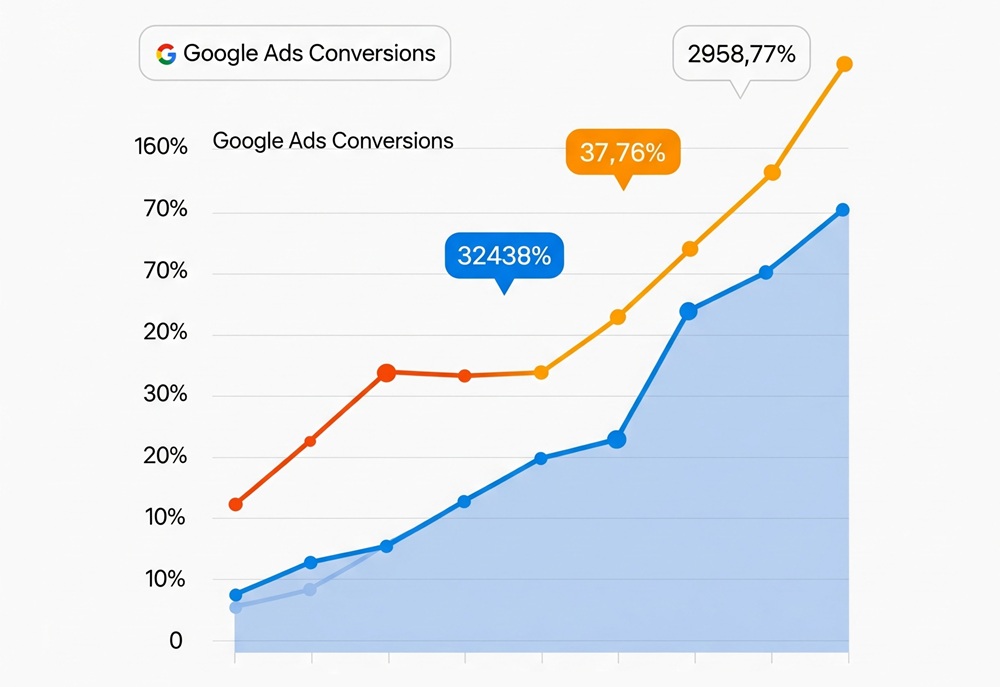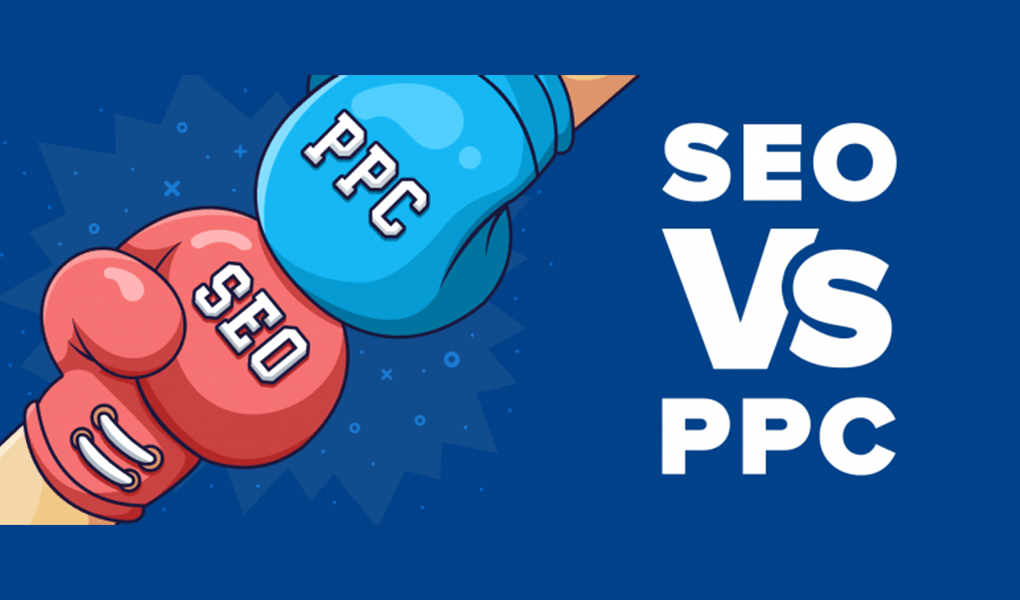Visibility feels like everything in the highly competitive digital landscape. From launching a startup to scaling an established brand, pushing your business to the next level is a must. SEO and PPC offer powerful ways to capture attention and drive traffic.
Still, they serve vastly different purposes while requiring distinct approaches. One builds trust over time; the other delivers instant results. Understanding the strengths and trade-offs of making the differences between plateauing and propelling your implementations.
What is SEO?

Search Engine Optimization (SEO) is a strategic discipline to enhance a website’s visibility in organic (non-paid) search engine results. The multifaceted approach involves on-page optimization (content, keywords, and meta tags), technical SEO (site speed, mobile-friendliness, indexing), and off-page efforts (backlink building and authority signals).
Alternatively, SEO is the art of helping websites appear higher in search engine resultswithout paying for ads. The ultimate objective is to increase the quantity and quality of web traffic by improving rankings for relevant search queries on platforms like Google, Bing, or Yahoo.
Solo creator, a startup, or an enterprise brand – SEO remains a long-term investment with compounding returns. It’s less about gaming the system anymore. Instead, SEO has evolved into creating high-quality, helpful content that genuinely addresses users’ problems.
Key Features of SEO
- Organic Visibility and Traffic Generation: SEO helps your website appear in unpaid (organic) search results, increasing visibility without recurring ad spend.
- Keyword Optimization: Identifying and targeting the right keywords ensures your content aligns with what your audience is searching for. 68% of online experiences begin with a search engine.
- Technical SEO: This includes site speed, mobile-friendliness, secure connections (HTTPS), and structured data. Google’s Core Web Vitals now directly impact rankings.
- Content Quality and Relevance: Search engines prioritize helpful, original, and user-focused content. The top-ranking page on Google typically has an average of 1,447 words, including multimedia.
- Backlink Building: Earning links from reputable sites signals authority and trustworthiness. A gear review site linking boosts your domain authority and search rankings.
- Local SEO: Optimizing for local search helps businesses appear in “near me” results and Google Maps.46% of all Google searches are looking for local information.
- User Experience (UX) Optimization: SEO includes UX (intuitive navigation, mobile responsiveness, and low bounce rates).Sites with better UX see up to 400% more engagement and conversions.
Benefits of SEO
- Cost-Effective Long-Term Strategy: Unlike PPC, SEO doesn’t charge per click. Once you rank, traffic is essentially free. SEO drives over 1,000% more traffic than organic social media.
- Higher Click-Through Rates (CTR): Users trust organic results more than ads.The first organic result on Google gets an average CTR of 27.6%.
- Better Conversion Rates: SEO leads have a 14.6% close rate, compared to 1.7% for outbound leads, such as cold calls or direct mail.
- Builds Brand Credibility and Trust: Ranking high signals authority. Users often associate top results with industry leaders.
- Sustainable Growth: SEO compounds over time. The more quality content and backlinks you build, the stronger your domain becomes. 91% of marketers said SEO improved website performance in 2024.
- Supports Other Marketing Channels: SEO insights (like keyword data) can inform content strategy, social media, and even product development.
Problems with SEO
- Targeting the Wrong Keywords: Many businesses chase high-volume, broad keywords that are either too competitive or irrelevant to their actual audience.
- Slow Page Load Speed: A sluggish website frustrates users and hurts rankings. Google’s Core Web Vitals now make speed a direct ranking factor.A 1-second delay in page load can reduce conversions by 7%.
- Indexing and Crawlability Issues: If search engines can’t crawl or index your pages, they won’t appear in search results.Pages accidentally blocked by `robots.txt` or tagged with `noindex`.
- Poor Site Structure and Navigation: A confusing site hierarchy makes it hard for both users and search engines to find content.
- Thin or Low-Quality Content: Pages with little value, duplicate content, or keyword stuffing get penalized.Google’s Panda algorithm targets low-quality content and can tank entire domains.
What is PPC?

Pay-Per-Click (PPC) is a digital advertising model where advertisers pay a fee each time their ad is clicked. It’s a way of buying visits to your site rather than attempting to ‘earn’ those visits organically through SEO. PPC is most commonly associated with search engine advertising (like Google Ads). Advertisers bid on keywords relevant to their target audience.
PPC is like putting up a digital billboard, but you only pay when someone clicks on it. The goal is to appear at the top of search results or on relevant websites, driving high-intent traffic to landing pages, product listings, or service offerings.
PPC today is more than just paying for clicks. It’s about precision targeting, data-driven decisions, and rapid experimentation. Whether you’re launching a new product or scaling a campaign, PPC offers the speed and control to reach the right audience at the right time.
Key Features of PPC
- Precision Targeting: PPC enables you to target users based on keywords, location, device, time, demographics, and even behavior.
- Real-Time Performance Tracking: Every click, impression, and conversion is measurable.You can instantly adjust bids, pause underperforming ads, or A/B test creatives.
- Budget Control: You set daily or campaign-level budgets and only pay when someone clicks.The average ROI for PPC is 200%, meaning you earn $2 for every $1 spent.
- Immediate Visibility: Unlike SEO, PPC can place your brand at the top of search results within hours.
- Ad Extensions and Customization: Enhance visibility and engagement by adding sitelinks, call buttons, product images, and more.Ads with extensions see up to 15% higher CTR than basic text ads.
- Retargeting Capabilities: Re-engage users who visited your site but didn’t convert.
- AI and Automation: Google Ads offers Smart Bidding, Performance Max, and automated ad creation. 52% of PPC clicks now come from mobile, and AI helps optimize for device-specific performance.
Advantages of PPC
- Fast Results: Launch a campaign today and get traffic today. It is ideal for product launches, seasonal promotions, or testing new offers.
- High Intent Traffic: Users clicking on PPC ads are often ready to act.Paid search visitors are 50% more likely to convert than organic visitors.
- Scalability: Start small, scale fast. Increase budget or expand keyword sets as performance improves.
- Brand Exposure: Even if users don’t click, your brand appears at the top of search results.
- Competitive Advantage: Outbid competitors for high-value keywords or appear in searches where they’re absent.
- Supports Omnichannel Strategy: PPC insights can inform SEO, social media, and content marketing.Retargeting can bridge the gap between platforms like YouTube, Instagram, and your website.
Issues with PPC
- High Costs and Budget Overruns: PPC campaigns can quickly become expensive, especially in competitive industries or when bidding on high-volume keywords.
- Click Fraud:Bots or competitors may maliciously click your ads, wasting your budget.Click fraud accounts for up to 14% of all PPC clicks in some industries.
- Low Conversion Rates: You’re getting traffic, but few users are converting into leads or customers.
- Ad Fatigue and Blindness: Users become desensitized to seeing the same ad repeatedly, lowering CTR.
- Poor Targeting: Ads are displayed to the incorrect audience, resulting in wasted spend.
Key Differences Between SEO and PPC
SEO (Search Engine Optimization)
- Focuses on organic (unpaid) search results.
- Takes time to build (3 to 6 months) for noticeable results.
- Offers long-term value; rankings can last with ongoing optimization.
- Requires content creation, keyword research, and technical site improvements.
- Builds credibility and trust with users (no ‘Ad’ label).
- Clicks are free, but effort and expertise are needed.
- Less control over placement and timing in search results.
- Ideal for informational content, brand authority, and evergreen traffic.
PPC (Pay-Per-Click Advertising)
- Focuses on paid placements in search engines and social platforms.
- Delivers immediate visibility; ads can go live within hours.
- Stops generating traffic when the budget runs out.
- Offers precise targeting by keyword, location, device, time, and audience.
- Ads are labeled as ‘Sponsored’ or ‘Ad’, which may affect trust.
- You pay per click, regardless of whether the user converts.
- Allows A/B testing and rapid campaign adjustments.
- Ideal for product launches, time-sensitive offers, and high-intent keywords.
PPC vs SEO: Core Differences at a Glance
| Feature | SEO (Search Engine Optimization) | PPC (Pay-Per-Click Advertising) |
| Cost per Click | Free (organic) | Paid (varies by keyword competition) |
| Time to Results | Long-term (3–6 months) | Immediate (within hours) |
| Sustainability | Compounds over time | Stops when the budget runs out |
| Click-Through Rate | Often higher trust, lower CTR | Higher CTR, especially for commercial intent |
| Conversion Rate | Higher in trust-based industries | Higher in transactional or time-sensitive niches |
| Control and Testing | Limited control, slower testing | Full control, rapid A/B testing |
Key Statistics (2025)
- Conversion Rates (All Industries): SEO features 2.4%, whereas PPC delivers 1.3%.
- Click Distribution: 75% of users click on organic resultsand 25% click on paid ads.
- Trust Factor: 70% of users say they trust organic results more than ads.
- Cost Efficiency: SEO leads cost 61% less than outbound leads. PPC offers 200% ROI on average ($2 earned for every $1 spent).
SEO converts at 7.3x the rate of PPC in financial sectors. In real estate, it’s 3.5x higher. It’s because trust and authority matter more than urgency. But in e-commerce, PPC often wins for speed and scale.
SEO or PPC: Which One to Choose?
When to Choose SEO
- SEO is ideal if you want to build sustainable, compounding traffic over time.
- You want to build authority and trust, especially for finance, healthcare, education, and eco-conscious brands.
- Have time and content resources as SEO thrives on consistent content creation.
- You’re targeting informational or research-based queries related to awareness and consideration stages.
When to Choose PPC
- You need immediate results upon launching a product orrunning a flash sale.
- Have a defined budget and clear ROI goals due to precise control of spend, targeting, and performance.
- You’re targeting high-intent, bottom-funnel users whenthey’re ready to buy.
- Test offers or landing pages quickly to validate messaging, pricing, or CTAs before scaling.
A niche market (like eco-friendly car camping gear)can benefit from SEO. You can own long-tail keywords and build community trust. Launching a new product line or testing a TikTok-inspired landing page seems more suitable for PPC, given the speed and data requirements.
Why Combine SEO and PPC?
- Shared Keyword Intelligence: PPC campaigns reveal which keywords convert best—insights you can feed into your SEO strategy.
- Double the SERP Real Estate: Appearing in both paid and organic results increases brand visibility and trust.Brands that appear in both paid and organic listings see 30%–50% higher click-through rates.
- Faster A/B Testing for SEO Content: Use PPC to test headlines, CTAs, and landing page formats before committing to long-term SEO content.
- Data-Driven Content Strategy: PPC data reveals what users are searching for and clicking on right now.Integrating PPC and SEO data helps marketers prioritize content that’s 3x more likely to convert.
- Brand Protection and Competitor Defense: Bidding on your brand name ensures competitors don’t steal clicks. It’s applicable even if you already rank #1 organically.
REI uses SEO for evergreen content, such as ‘how to choose a sleeping bag,’ and PPC for seasonal promotions, like ‘20% off car camping gear.’Sucha dual approach captures researchers and ready-to-buy shoppers.
HubSpot leverages PPC to promote gated content (eBooks, webinars) while SEO drives traffic to blog posts and product pages. A seamless funnel from awareness to conversion.
Choosing between SEO and PPC is more a matter of implementing now versus thinking long-term. SEO builds trust, authority, and organic visibility over time. PPC delivers speed, precision, and performance on demand. When combined, they become a reformed strategy to drive more traffic.
Contact Tectera for PPC and SEO services in Sri Lanka.
Frequently Asked Questions
It depends on your goals, timeline, and budget. However, for most small businesses, SEO is a better long-term investment, while PPC is ideal for achieving quick wins.
4 to 12 months, depending on your niche, competition, and strategy.
Short-term (0 – 3 months): Technical fixes, keyword research, and content creation begin.
Mid-term (3 – 6 months): Rankings start to improve; traffic begins to grow.
Long-term (6 – 12+ months): Compounding results, strong domain authority, and constant traffic.
Yes, but indirectly. PPC doesn’t directly boost organic rankings, But it supports SEO in several strategic ways– keyword testing, increased visibility, retargeting SEO visitors, and content promotion.
SEO generally delivers a higher ROI over time. PPC offers faster but more expensive returns.SEO ROI seems ~25% higher than PPC on average. PPC can yield an average ROI of ~200% ($2 return for every $1 spent).





